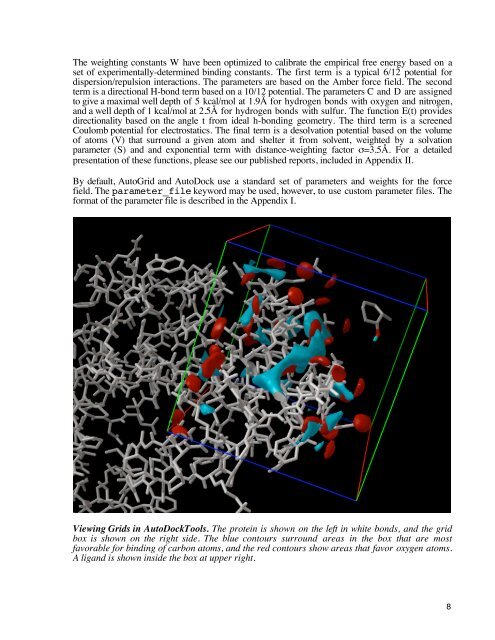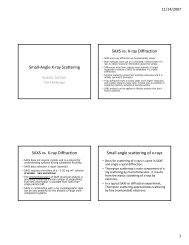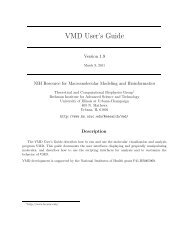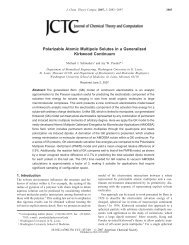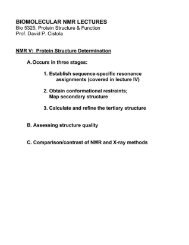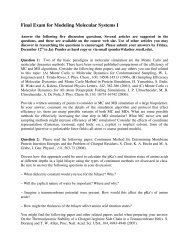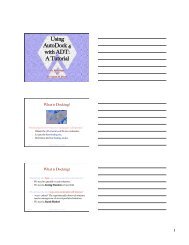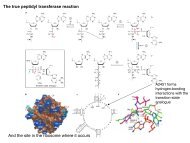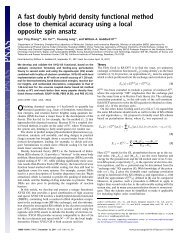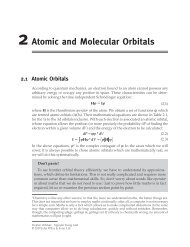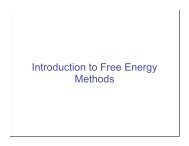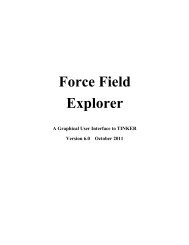AutoDock Version 4.2
AutoDock Version 4.2
AutoDock Version 4.2
You also want an ePaper? Increase the reach of your titles
YUMPU automatically turns print PDFs into web optimized ePapers that Google loves.
The weighting constants W have been optimized to calibrate the empirical free energy based on aset of experimentally-determined binding constants. The first term is a typical 6/12 potential fordispersion/repulsion interactions. The parameters are based on the Amber force field. The secondterm is a directional H-bond term based on a 10/12 potential. The parameters C and D are assignedto give a maximal well depth of 5 kcal/mol at 1.9Å for hydrogen bonds with oxygen and nitrogen,and a well depth of 1 kcal/mol at 2.5Å for hydrogen bonds with sulfur. The function E(t) providesdirectionality based on the angle t from ideal h-bonding geometry. The third term is a screenedCoulomb potential for electrostatics. The final term is a desolvation potential based on the volumeof atoms (V) that surround a given atom and shelter it from solvent, weighted by a solvationparameter (S) and and exponential term with distance-weighting factor σ=3.5Å. For a detailedpresentation of these functions, please see our published reports, included in Appendix II.By default, AutoGrid and <strong>AutoDock</strong> use a standard set of parameters and weights for the forcefield. The parameter_file keyword may be used, however, to use custom parameter files. Theformat of the parameter file is described in the Appendix I.Viewing Grids in <strong>AutoDock</strong>Tools. The protein is shown on the left in white bonds, and the gridbox is shown on the right side. The blue contours surround areas in the box that are mostfavorable for binding of carbon atoms, and the red contours show areas that favor oxygen atoms.A ligand is shown inside the box at upper right.8


